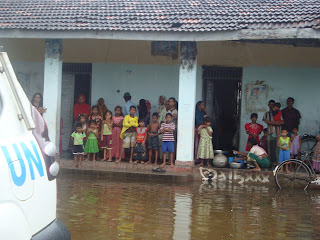Construction Guidelines for Disaster Resilient Roads are being developed by Road Development Authority, Disaster Management Centre and United Nations Development Programme.
It is observed that considerable length of the road network frequently affeted by Disasters. Frequently due to floods and landslides. The response agencies for disasters are faced difficulties to reach the affected communities through the land transport and provide relief in emrgencies. Further the government has to spend more money to rehabilitate the damaged roads.
Considering the above reasons the three organizations jointly developed the guidelines to construct disaster resilient roads. This will guide the technical people and the organizations involving in road constructions. This book is still in the draft version. If you are interested to read the draft and provide your comments, request the softcopy from Disaster Management Centre or contact via e mail:
Kalana.Cooray@undp.org












